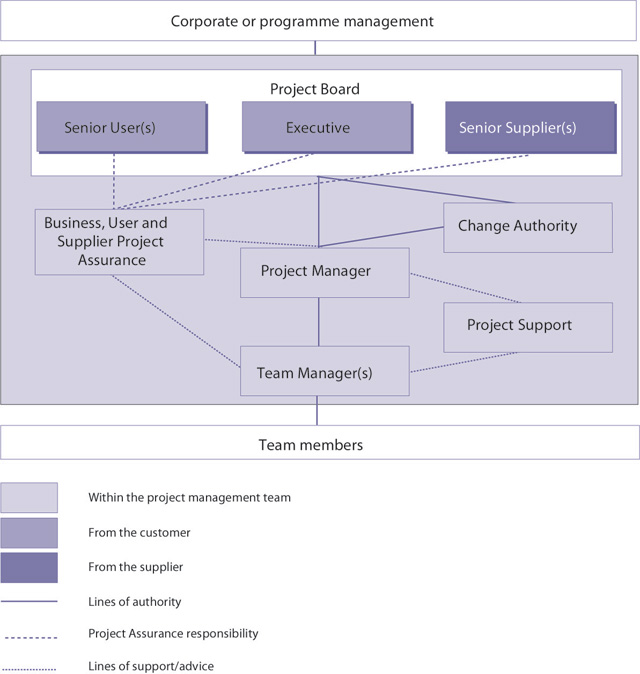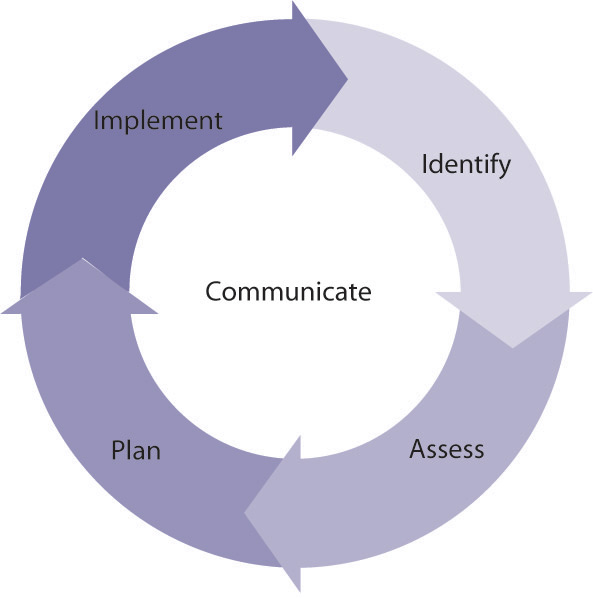|
New technology develops at an alarming rate. Business gets more competitive by the day; demands for speed and quality require new thinking and revised processes. Here we list some current trends and challenges for project managers. Today’s project managers need to update their processes in line with business, customer and stakeholder expectations. Collaboration is a common theme. We offer APMG accredited PRINCE2 Training and MSP Training courses at our training centre in Brighton, but we can also come to your premises for training. Call us on 01273 622272 for a quote. |

Adoption of Collaborative Software Solutions
The use of collaborative technologies is on the rise. The use of Google Docsand SharePoint is becoming more commonplace. Virtual workers and projects require efficient ways of communication and collaboration.
Automatic and central distribution and control of documents has never been easier.
Agile Project Management
As projects become increasingly complex, project managers need to be increasingly flexible. Businesses and organisations are beginning to adopt Agile Project Management practices and combining them with traditional project management. Many are using Agile to inform and develop a new set of strategies for coping with projects, adapting methods for team collaboration and communication.
Agile Project Management Training enables you to gain Agile Practitioner Certification, enabling you to successfully manage Agile projects.
Andy Trainer
23 Mar 2012
PRINCE2® Themes – Organisation
The purpose of the Organisation theme is to define and establish the project’s structure of accountability and responsibilities (the who?).
There are four layers of management in a project:
- Corporate or Programme Management
- Project Board
- Project Manager
- Team Managers

© Crown Copyright 2009. Reproduced under Licence from OGC
- Executive – a key decision maker who owns the business case
- Senior User – Provides user resources. Defines and verifies user requirements and expectations.
- Senior Supplier – Provides supplier resources.
- Project Assurance – Advises on selection of team members. Advises on stakeholder engagement.
- Project Manager – Prepares strategies. Reviews and updates project management team structure. Prepares role descriptions.
- Team Managers – Manage team members. Advises on team members and stakeholder engagement.
- Project Support – Provide administrative support to the project management team.
Some of the PRINCE2 roles cannot be shared or delegated. The Project Manager role cannot be shared or the decision making roles and responsibilities of the Project Board or Project Manager.
Andy Trainer
12 Jul 2007
PRINCE2® Themes – Organisation
The purpose of the Organisation theme is to define and establish the project’s structure of accountability and responsibilities (the who?).
There are four layers of management in a project:
- Corporate or Programme Management
- Project Board
- Project Manager
- Team Managers

© Crown Copyright 2009. Reproduced under Licence from OGC
- Executive – a key decision maker who owns the business case
- Senior User – Provides user resources. Defines and verifies user requirements and expectations.
- Senior Supplier – Provides supplier resources.
- Project Assurance – Advises on selection of team members. Advises on stakeholder engagement.
- Project Manager – Prepares strategies. Reviews and updates project management team structure. Prepares role descriptions.
- Team Managers – Manage team members. Advises on team members and stakeholder engagement.
- Project Support – Provide administrative support to the project management team.
Some of the PRINCE2 roles cannot be shared or delegated. The Project Manager role cannot be shared or the decision making roles and responsibilities of the Project Board or Project Manager.
Andy Trainer
12 Jul 2007
PRINCE2® Themes – Risk Management
The purpose of the Risk theme is to identify, assess and control uncertainty and, as a result, improve the ability of the project to succeed.
Risk taking in projects is inevitable since projects are enablers of change and change introduces uncertainty, hence risk. Management of risk should be systematic and not based on chance. It is about the proactive identification, assessment and control of risks that might affect the delivery of the project’s objectives.
The project should establish and maintain a cost effective risk management procedure. The aim is to support better decision making through a good understanding of risks – their causes, likelihood, impact, timing, and the choice of responses to them.
Management of risk is a continual activity, performed throughout the life of the project. Without an ongoing and effective risk management procedure it is not possible to give confidence that the project is able to meet its objectives and therefore whether it is worthwhile for it to continue. Hence effective risk
management is a prerequisite of the continued business justification principle.
Risk management:
For risk management to be effective, risks need to be:
- Identified This includes risks being considered that could affect the achievement of the project’s objectives, and then described to ensure that there is a common understanding of these risks
- Assessed This includes ensuring that each risk can be ranked in terms of estimated likelihood, impact and immediacy, and understanding the overall level of risk associated with the project
- Controlled This includes identifying appropriate responses to risks, assigning risk owners, and then executing, monitoring and controlling these responses.
Risk Management procedure

© Crown Copyright 2009. Reproduced under Licence from OGC
PRINCE2 recommends a risk management procedure comprising the following five steps:
- Identify (context and risks)
- Assess (i.e. Estimate and Evaluate)
- Plan
- Implement
- Communicate
The first four steps are sequential, with the ’Communicate’ step running in parallel because the findings of any of the other steps may need to be communicated prior to the completion of the overall process. All of the steps are iterative in nature in that when additional information becomes available, it is often necessary to revisit earlier steps and carry them out again to achieve the most effective result.
In addition to our PRINCE2 Courses we can also arrange Risk Management course on a private basis on dates to suit.
Andy Trainer
12 Jul 2007
If you've attended our PRINCE2® Foundation or PRINCE2 Practitioner course and want to start a project using PRINCE2 back at work, you'll need somewhere to start.
Here you can download official PRINCE2 project templates to help you to manage your project effectively.
You can download a zipped folder containing all of the PRINCE2 project templates or select individual templates from the list below:

PRINCE2 Project Templates:
- Benefits Review Plan
- Business Case
- Checkpoint Report
- Communication Management Strategy
- Configuration Item Record
- Configuration Management Strategy
- Daily Log
- End Project Report
- End Stage Report
- Exception Report
- Highlight Report
- Issue Register
- Issue Report
- Lessons Log
- Lessons Report
- Project Plan
- Product Description
- Product Status Account
- Project Brief
- Project Initiation Documentation
- Project Product Description
- Quality Management Strategy
- Quality Register
- Risk Management Strategy
- Risk Register
- Work Package
Andy Trainer
18 Nov 2009
If you've attended our PRINCE2® Foundation or PRINCE2 Practitioner course and want to start a project using PRINCE2 back at work, you'll need somewhere to start.
Here you can download official PRINCE2 project templates to help you to manage your project effectively.
You can download a zipped folder containing all of the PRINCE2 project templates or select individual templates from the list below:

PRINCE2 Project Templates:
- Benefits Review Plan
- Business Case
- Checkpoint Report
- Communication Management Strategy
- Configuration Item Record
- Configuration Management Strategy
- Daily Log
- End Project Report
- End Stage Report
- Exception Report
- Highlight Report
- Issue Register
- Issue Report
- Lessons Log
- Lessons Report
- Project Plan
- Product Description
- Product Status Account
- Project Brief
- Project Initiation Documentation
- Project Product Description
- Quality Management Strategy
- Quality Register
- Risk Management Strategy
- Risk Register
- Work Package
Andy Trainer
18 Nov 2009
As we always make clear on our PRINCE2® training, PRINCE2 is a toolkit. Whilst you need to learn the whole toolkit to pass your PRINCE2 Foundation or PRINCE2 Practitioner exam, when you come to run PRINCE2 projects back in the workplace, you'll use the parts of the methodology that suit your situation most, and not necessarily all of the tools on every project.
If you're building a business case for implementing PRINCE2 in your organisation, or have attended one our PRINCE2® Foundation or PRINCE2® Practitioner training and want some more information about how other organisations have implemented PRINCE2, these case studies provide useful insights in to how PRINCE2 2009 is used in the real world, and the benefits it can bring.
Click on the links below to download case studies about how the British Council and Suffolk County Council have implemented PRINCE2.


Andy Trainer
18 Nov 2009
As we always make clear on our PRINCE2® training, PRINCE2 is a toolkit. Whilst you need to learn the whole toolkit to pass your PRINCE2 Foundation or PRINCE2 Practitioner exam, when you come to run PRINCE2 projects back in the workplace, you'll use the parts of the methodology that suit your situation most, and not necessarily all of the tools on every project.
If you're building a business case for implementing PRINCE2 in your organisation, or have attended one our PRINCE2® Foundation or PRINCE2® Practitioner training and want some more information about how other organisations have implemented PRINCE2, these case studies provide useful insights in to how PRINCE2 2009 is used in the real world, and the benefits it can bring.
Click on the links below to download case studies about how the British Council and Suffolk County Council have implemented PRINCE2.


Andy Trainer
18 Nov 2009